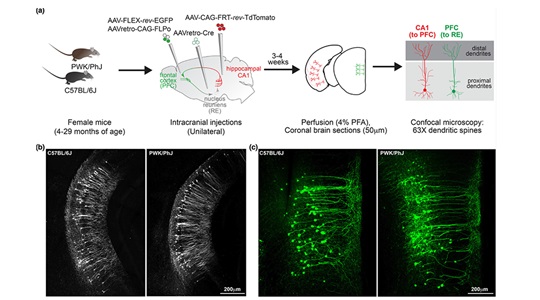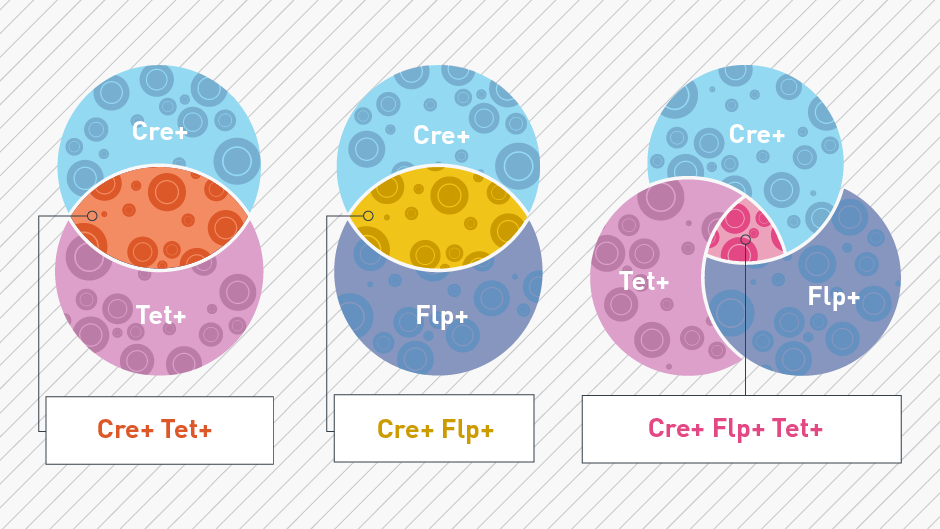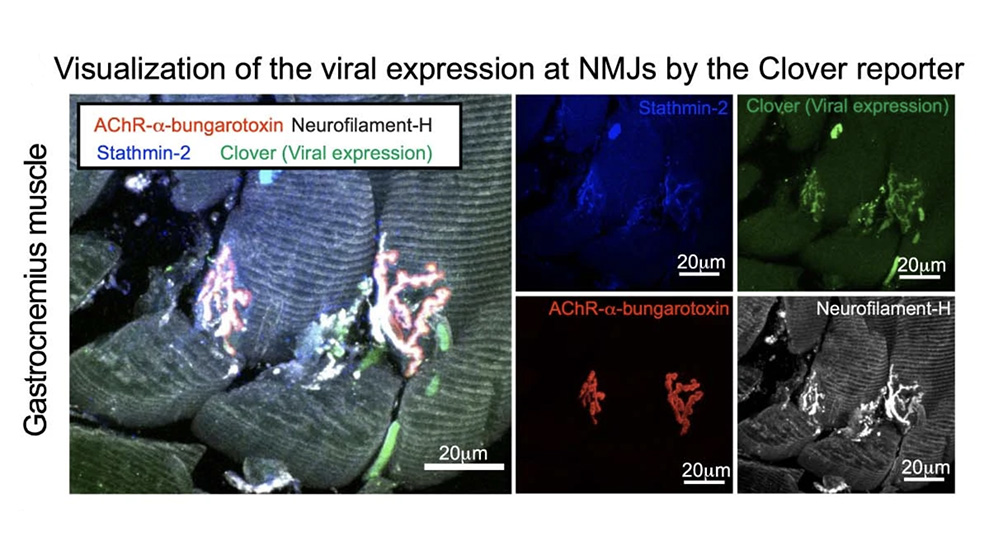The Bloss Lab
The Bloss Lab leverages high resolution imaging, observation and manipulation of in vivo neural activity, and genetic perturbations in specific neurons to define how neural circuits supports goal-directed behavior.
Principal Investigator
Location
The brain is a powerful computational device, yet we understand very little about the mechanisms it uses to produce cognition. Our past work demonstrated that genetically or anatomically defined neurons are connected in remarkably precise ways, promoting certain forms of circuit computations over others. Exactly how these precise wiring patterns and the resulting computations they support become altered by experience (e.g., learning) or by disease (e.g., Alzheimer’s disease) remains unknown. We use advanced imaging techniques to define synaptic connectivity between specific cell types. We pair this approach with viral, genetic, chemogenetic, and in vivo imaging strategies to relate the structural or functional features of specific cell types to the behavioral performance of mice in goal-directed tasks. Collaborations within and outside of JAX seek to identify the broader principles by which cognition emerges from underlying brain circuitry in health and disease states.
Resources
Open Positions
Selected Publications
- 0 Heinig S, Aigner T, Bloß HG, Grabenbauer GG. Spinal and cervical nodal metastases in a patient with glioblastoma. Strahlenther Onkol. 2024 Sep; 200(9):838-843
- 0 Heuer SE, Bloss EB, Howell GR. Strategies to dissect microglia-synaptic interactions during aging and in Alzheimer's disease. Neuropharmacology. 2024 Aug 15; 254:109987
- 66 Virga DM, Hamilton S, Osei B, Morgan A, Kneis P, Zamponi E, Park NJ, Hewitt VL, Zhang D, Gonzalez KC, Russell FM, Grahame Hardie D, Prudent J, Bloss E, Losonczy A, Polleux F, Lewis TL Jr. Activity-dependent compartmentalization of dendritic mitochondria morphology through local regulation of fusion-fission balance in neurons in vivo. Nat Commun. 2024 Mar 8; 15(1):2142
- 90 Heuer SE, Nickerson EW, Howell GR, Bloss EB. Genetic context drives age-related disparities in synaptic maintenance and structure across cortical and hippocampal neuronal circuits. Aging Cell. 2024 Feb; 23(2):e14033
- 62 Heuer SE, Keezer KJ, Hewes AA, Onos KD, Graham KC, Howell GR, Bloss EB. Control of hippocampal synaptic plasticity by microglia-dendrite interactions depends on genetic context in mouse models of Alzheimer's disease. Alzheimers Dement. 2024 Jan; 20(1):601-614
- 80 Heuer SE, Nickerson EW, Howell GR, Bloss EB. Genetic context drives age-related disparities in synaptic maintenance and structure across cortical and hippocampal neuronal circuits. bioRxiv. 2023 Aug 1
- 54 Heuer SE, Keezer KJ, Hewes AA, Onos KD, Graham KC, Howell GR, Bloss EB. Genetic context controls early microglia-synaptic interactions in mouse models of Alzheimer's disease. bioRxiv. 2023 Apr 29
- 43 Virga DM, Hamilton S, Osei B, Morgan A, Zamponi E, Park NJ, Hewitt VL, Zhang D, Gonzalez KC, Bloss E, Polleux F, Lewis TL Jr. Activity-dependent subcellular compartmentalization of dendritic mitochondria structure in CA1 pyramidal neurons. bioRxiv. 2023 Mar 26
- 0 Graham K, Spruston N, Bloss EB. Hippocampal and thalamic afferents form distinct synaptic microcircuits in the mouse infralimbic frontal cortex. Cell Rep. 2021 Oct 19; 37(3):109837
- 85 Bloss EB, Hunt DL. Revealing the Synaptic Hodology of Mammalian Neural Circuits With Multiscale Neurocartography. Front Neuroinform. 2019; 13:52
- 69 Chan TE, Grossman YS, Bloss EB, Janssen WG, Lou W, McEwen BS, Dumitriu D, Morrison JH. Cell-Type Specific Changes in Glial Morphology and Glucocorticoid Expression During Stress and Aging in the Medial Prefrontal Cortex. Front Aging Neurosci. 2018; 10:146
- 0 Bloss EB, Cembrowski MS, Karsh B, Colonell J, Fetter RD, Spruston N. Single excitatory axons form clustered synapses onto CA1 pyramidal cell dendrites. Nat Neurosci. 2018 Mar; 21(3):353-363
-
 ArticleJuly 29, 2024
ArticleJuly 29, 2024MODEL-AD drives progress for Alzheimer’s research
The July issue of Alzheimer’s & Dementia spotlights progress by MODEL-AD and its work to create better models for Alzheimer’s disease research and catalyze progress in the field. -
 ArticleJuly 24, 2024
ArticleJuly 24, 2024Researchers are closing in on a mouse model for late-onset Alzheimer’s research
Mice don’t get Alzheimer’s—and while that’s good news for mice, it’s a big problem for biomedical researchers seeking to understand the disease and test new treatments. Now, researchers at The Jackson Laboratory are working to create the first strain of mice that’s genetically susceptible to late-onset Alzheimer’s, with potentially transformative implications for dementia research. -
 Featured ArticleMarch 14, 2024
Featured ArticleMarch 14, 20242024 Paigen Fellowship recognizes postdoctoral talent
The Paigen Fellowship supports postdoctoral associate Abdulfatai Tijjani's humanistic approach to research. -
 Research HighlightJanuary 04, 2024
Research HighlightJanuary 04, 2024Mouse strains mirror variable human cognitive decline with aging
Erik Bloss, Gareth Howell and predoctoral associate Sarah Heuer are examining the effects of aging in mouse neurons and synapses.
-
 Media ReleaseJuly 24, 2024
Media ReleaseJuly 24, 2024New analysis - targeted Alzheimer’s research and drug discovery
Researchers at The Jackson Laboratory offer the first comprehensive ranking of the relative role and significance of every known gene and protein in the development of Alzheimer’s Disease in advance of the Alzheimer's Association International Conference, July 28 -
 Featured ArticleApril 25, 2024
Featured ArticleApril 25, 2024Postdocs discuss neurodegenerative conditions for 'Scientifically Speaking'
JAX’s 'Scientifically Speaking' virtual series continues May 7, featuring two postdoctoral associates taking on the challenge of neurodegenerative disease. -
 Blog PostMarch 01, 2024
Blog PostMarch 01, 2024Intersectional Genetics: Cre-lox with a twist
Cre-lox technology initially represented the pinnacle of sophistication; but as it drove scientific breakthroughs and advanced understanding, more refined questions arose, creating the need for an even more sophisticated tool. -
 Featured ArticleNovember 27, 2023
Featured ArticleNovember 27, 2023Important new ALS insights
About 5,000 people are diagnosed with ALS each year in the United States, and most people with ALS live for only two to five years after diagnosis.